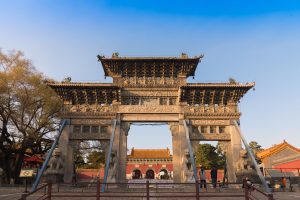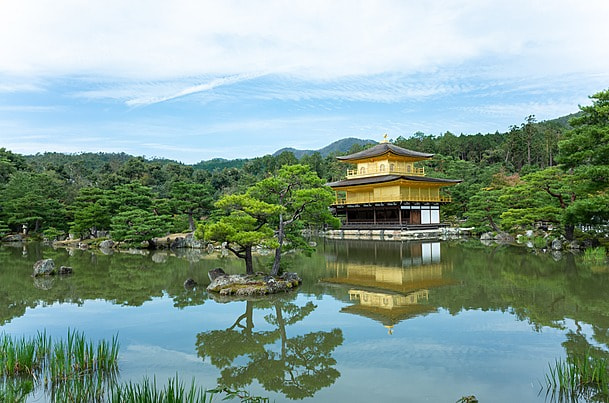Cultural Heritage Preservation Efforts in Endangered Regions
Cultural heritage preservation efforts are often hampered by armed conflict or social persecution. This is evident in the destruction of manuscripts in Timbuktu and the attempt to prosecute jihadists for their actions in Mali.
Locally led research, more equitable heritage funding and a shift in policy agendas could help address these challenges. For instance, a heritage-based approach might include indigenous stone terracing techniques for protecting sites from landslides and climate change risks.
The Urgency of Preservation
Efforts to protect cultural and natural heritage involve a broad range of experts, from archaeologists and historians to architects and conservationists. They also require experts in hydrology, geology, and agronomy to safeguard physical sites. And experts in chemistry, physics, and biology help preserve biological specimens.
But preservation efforts cannot succeed without understanding the social and cultural contexts of the sites in question. Anthropologists and sociologists are essential to this effort, as well as engineers and environmental scientists who can provide the methodologies for on-the-ground data collection and predictive analysis.
The cultural and economic benefits of protected areas can also boost support for them. For instance, enabling indigenous peoples to continue their traditional ecological knowledge through community-led conservation enterprises on their own lands can strengthen culture, as well as help them sustainably manage natural resources.
Similarly, supporting women’s participation in conservation, economic development, and decision-making can improve the livelihoods of their communities, which can then boost political support for protecting those same natural resources. Such measures can also promote gender equity and reduce poverty, particularly for women, who often bear the brunt of climate change impacts. Neil MacGregor suggests that the concept of “stewardship” rather than “ownership” would be a better approach for addressing such issues, as it entails the obligation to hold the object “for the benefit of all future generations, whether native or not.”3 But this requires navigating at least three political fault lines: the limits of sovereignty, the role of nonstate actors, and the nature of property.
Threats to Cultural Heritage
The preservation of cultural heritage properties requires a vast range of experts including conservationists and conservators; archaeologists, historians and architects; materials scientists, engineers, hydrologists, agronomists and geologists; art curators and museum directors; folklorists, anthropologists and ethnographers; and program managers. These professionals can be found in national ministries of culture, intergovernmental organizations like UNESCO and the International Centre for the Study of the Preservation and Restoration of Cultural Property, museums, universities and libraries, and NGOs such as the Smithsonian and the Getty Foundation.
In addition to the threat of natural disasters and extreme weather events, many cultural heritage sites also face threats from destructive human activities such as mining, construction and tourism. Some of the most endangered sites include UNESCO World Heritage Sites. Others, such as vernacular architecture in rural villages and traditional towns, are at risk from neglect or over-renovation to conform with contemporary standards of building comfort, while still others, such as indigenous peoples’ practices, are at risk because they have been perceived as backward by more modern societies.
The intangible aspects of heritage, such as homegrown music styles and festivals, are at risk, too. UNESCO’s List of Intangible Cultural Heritage recognizes these traditions and helps protect them from commercialization, but getting a festival on the list is no small feat: Countries have to fight to promote their cultures before a prestigious committee weighs in on whether the Chinese shadow puppetry or Argentine tango deserves a spot.
Strategies for Preservation
Embodied in ancient archaeological sites and historical buildings, in a country’s museums, libraries and archives, in collections of antiquities and artifacts and as the lifeways of contemporary communities, cultural heritage is both an important source of national pride and an invaluable resource for social stability. Yet benign neglect, devastating accidents, major natural disasters and, now, climate change can threaten it.
Government ministries of culture, international intergovernmental organizations like UNESCO and inter-governmental treaty bodies, and non-governmental groups and foundations have developed conservation, preservation and revitalization programs to preserve cultural heritage. They also provide educational and training opportunities, as well as funding to support local preservation efforts.
These programs have scored high-profile preservation successes, such as stopping a highway near Egypt’s Giza pyramids, preventing a salt mine from being built at a gray whale nursery in Mexico and canceling a dam project above Africa’s Victoria Falls. But there are limits to the power of cultural heritage preservation efforts, especially in areas where governments have lost control of their territory and are actively destroying cultural treasures. This is why cultural heritage protection must include a strong component of redress and rehabilitation. This is a crucial aspect of the UNESCO World Heritage Convention and its safeguarding treaties.
Community Engagement and Empowerment
Community engagement involves working collaboratively with community members and incorporating their input and participation in decisions that affect them. It also empowers community members to find and implement solutions to problems that have been affecting them. It requires establishing lines of communication and regular feedback, and is important for building trust.
Community members involved in preservation efforts include residents, local cultural organizations, schoolchildren, volunteers and community leaders. They can offer technical expertise in areas such as engineering, architecture and archaeology; and scientific expertise, including chemistry, physics, hydrology, agronomy and geology. They can also be experts in the history and culture of their sites or collections.
Empowering communities to address their own issues will ultimately help to protect the heritage. For example, a study found that implementing indigenous stone terracing techniques in the Philippines can reduce the risk of landslides, which are exacerbated by climate change. Another way to empower communities is by providing them with access to research, training and funding. This will make heritage preservation more inclusive and equitable and improve global resilience to climate changes. This is the essence of what is known as the “knowledge triangle” and it should be at the heart of preservation initiatives.
Technological Innovations in Preservation
As the number of endangered species has climbed and global warming threatens many sites, scholars have begun to study the effects of climate change on heritage materials. For example, one paper looked at how surface recession and biomass accumulation on limestone deteriorates heritage structures and contributes to their vulnerability. Another explored how salt weathering impacts inorganic heritage building materials. Another investigated the impacts of a pollutant on marble.

The UNESCO World Heritage program has scored high-profile preservation successes, such as pushing to stop a highway near Egypt’s Giza pyramids and halting a proposed dam above Africa’s Victoria Falls. Its funds, supplied by dues from signatories, also have hired park rangers, bought land, and restored temples.
Nations work hard to get their wilderness areas, archaeological treasures, and cultural centers on the list, which brings prestige and public awareness. But any effort to advance new norms or customary international law will likely confront a common claim: sacrosanct sovereignty.
International Collaborations and Partnerships
Inscription on the World Heritage list can bring prestige, bolster tourism, and prompt public or private funding for restoration projects. Nations work hard to get their wilderness areas, archaeological treasures, and cultural sites on the list, which aims to foster global collaboration in identifying and preserving invaluable natural and cultural assets.
Across the globe, heritage preservation efforts involve a host of experts. Engineers, architects, and program managers provide technical expertise. Materials scientists, conservators, and chemists contribute knowledge. Geologists, hydrologists, agronomists, and botanists help preserve physical sites. For intangible heritage, folklorists, historians, anthropologists, and ethnographers contribute to research, documenting, and analyzing it.
A new special issue of the journal Geosciences highlights research on the effects of climate change on cultural heritage and resources, including human-built structures like churches and palaces. The work reveals that the climatic impact of such buildings is not always immediately visible, and may take years to become apparent.
For example, a study of Indigenous stone terracing techniques in the Philippines suggests that these traditional practices could mitigate the impacts of climate change on landlides and flooding, which are made worse by rising sea levels and stronger typhoons. This is only one of many examples that demonstrate how cultural heritage offers solutions to climate change, and how knowledge gained through conservation can also enhance global adaptation to it.
Success Stories and Challenges Ahead
Saving heritage involves a diverse array of professionals, including conservators and law enforcement personnel, architects and program managers, chemists, art historians, hydrologists, geoarchaeologists, agronomists, geologists, biologists, zoologists, and material scientists. In the case of intangible cultural heritage, folklorists and ethnographers, artists, arts administrators, social workers, educators, and community organizers are often involved as well.
The success stories of preservation efforts in endangered regions can be attributed to the collaboration of a wide range of partners, including government ministries of culture and national museums, intergovernmental organizations such as UNESCO and the International Council of Museums, nongovernmental organizations such as the Smithsonian, Blue Shield, and Geneva Call, donors, and private individuals. However, preservation experts say that a more holistic approach to conservation is needed. They argue that research priorities and funding should be more centered on low-income countries, while incorporating indigenous and local communities’ values and judgments with climate change risk and vulnerability assessments.
Moreover, conservation efforts should not be seen as separate from addressing human needs, says Ms. Wegener of the Smithsonian Institution. “Saving people also means saving their heritage — you can’t separate them.” Indeed, she believes that “it is difficult to save heritage if the world’s inhabitants are dying” (Stiffman 2015). The world must address its cultural and humanitarian crises together.



